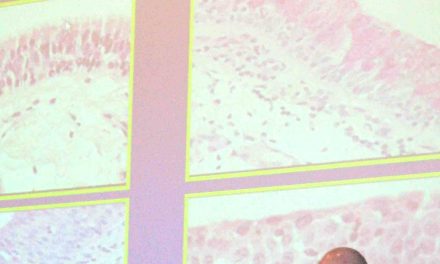The International Cannabinoid Research Society’s annual symposium was held by zoom June 21-24. Gone are the days when blockbuster discoveries were announced at ICRS meetings. The structure of the body’s two cannabinoid receptors (CB1 and CB2); the compounds made in the body that activate them (anandamide and 2-AG); the steps by which these two “endogenous cannabinoids” are synthesized and then broken down —these key findings, presented at ICRS meetings around the turn of the century, are said to have elucidated the endocannabinoid system (ECS).
An interesting presentation was made this year by Ethan Russo, MD, a neurologist who for many years was the Senior Medical Advisor at GW Pharmaceuticals, the British company that developed the first cannabis-based drug to win FDA approval. An exceptionally good explainer, Russo helped publicize the medical potential of CBD, the importance of terpenes, and the “entourage effect” whereby not one but several components of the plant create a given impact. Russo also posited that many illnesses of uncertain origin were “clinical endocannabinoid deficiency disorders.” After leaving GW, he wandered in the cannabiz wilderness for four years before co-founding in 2020 a company called CReDO. As if making up for lost time, Russo and his partner Nishi Whiteley promptly began filing provisional patents on treatments leveraging cannabis and the endocannabinoid system. They have filed seven to date. The one Russo discussed at the ICRS meeting is for an unusual disorder called Cannabinoid Hyperemesis Syndrome (CHS).
First identified in 2004, CHS involves cycles of nausea, vomiting and stomach pain. It is generally brought on by heavy cannabis use and can be relieved somewhat by hot showers or the topical application of capsaicin. Standard anti-emetics are ineffective but some patients are helped by haloperidol (Haldol®), an antipsychotic. Only abstinence provides full relief. Continued abstinence can prevent CHS, but many heavy users don’t want to forever abstain.
CHS is a “diagnosis of exclusion,” meaning doctors have to try and rule out other causes of the symptoms such as gall bladder disease and Irritable Bowel Syndrome. Patients typically make multiple Emergency Room visits and most are hospitalized at least once before getting a CHS diagnosis. Negotiating the health care system and getting a diagnosis can lead to expenses approaching six figures.
Cannabis cultists who believe that the sacred herb can do no harm have insisted that CHS is caused by residual pesticides or neem oil, and/or that the symptoms are psychosomatic. CHS sufferers trying to share information online often get ridiculed.
Russo hypothesized that CHS is caused by mutations in certain genes that encode receptors and enzymes involved in THC metabolism. Genomic testing kits were sent out by Endocanna Health to 99 heavy users afflicted with CHS; 28 were returned. Online skeptics questioning CReDO’s motives created reluctance to take part, Russo says. Nevertheless, his team carried out “the largest CHS study to date, and the first to examine genomics systematically.”
Five mutations that evidently contribute to CHS were identified. They affect THC breakdown, the TRPV1 receptor, and cholesterol metabolism; two affect the neurotransmitter dopamine. “This battery may represent a valid screening diagnostic for CHS susceptibility and obviate need for repetitive fruitless tests on hospitalization,” Russo concluded. Therein lies the commercial potential of CReDO’s patent. —O’Shaughnessy’s News Service





